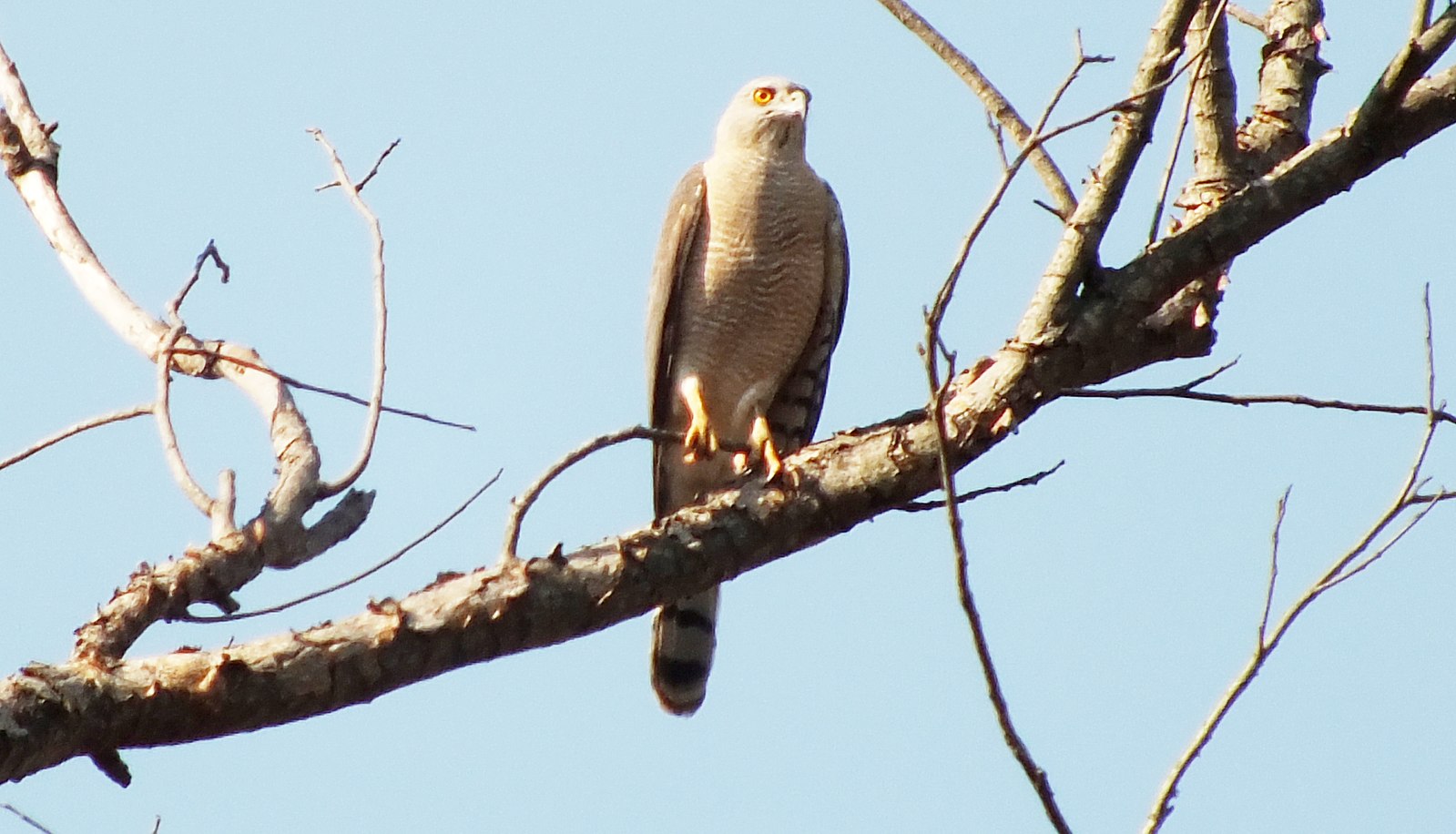The Shikra (Accipiter badius) is a small bird of prey that is widely distributed across Asia and Africa. Known for its agility and hunting prowess, the Shikra’s diet is a fascinating reflection of its adaptability and versatility as a predator.
The Shikra’s Diverse Prey
Shikras are opportunistic hunters, feeding on a wide range of prey that includes:
- Rodents, such as squirrels and small mice
- Small birds, including partridges, crows, and even young peafowl
- Small reptiles, primarily lizards, and occasionally small snakes
- Insects, particularly emerging winged termites
- Small bats, which they have been observed hunting at dusk
This diverse diet allows the Shikra to thrive in a variety of habitats, from forests and farmland to urban areas. Their ability to adapt their hunting strategies to the available prey is a key factor in their success as a species.
Hunting Techniques and Behaviors
 Image source: SHIKRA by Shiv’s fotografia
Image source: SHIKRA by Shiv’s fotografia
Shikras are skilled hunters, employing a range of techniques to capture their prey. They are known to soar on thermals and stoop at each other during the breeding season, a behavior that is thought to be a display of their hunting prowess. Additionally, Shikras have been observed feeding on emerging winged termites and hunting small bats at dusk, showcasing their versatility and adaptability.
One interesting aspect of Shikra behavior is their interaction with drongos. Drongos have been observed mimicking the calls of Shikras, which is believed to aid in stealing food by alarming other birds that the drongos associate with. This behavior highlights the complex social dynamics of the avian world and the ways in which different species interact with each other.
Shikras and Falconry
Shikras were highly prized among falconers in India and Pakistan due to their ease of training and ability to take larger birds. The word “Shikra” or “Shikara” means “hunter” in the Hindi language, and the bird was frequently used to procure food for more valuable falcons.
The Shikra’s popularity in falconry speaks to its intelligence and trainability, as well as its hunting prowess. Falconers recognized the Shikra’s potential as a skilled predator and incorporated it into their hunting practices.
Conservation Status and Habitat
Shikras are not currently considered threatened and are common in the driest woodland and savannahs with trees, often seen near human habitations. Their adaptability to a wide range of habitats, from forests to urban areas, has contributed to their success as a species.
However, it is important to monitor the Shikra’s population and habitat trends to ensure their continued survival. As with any species, changes in the environment or human activities can impact their populations, and conservation efforts may be necessary to protect this remarkable raptor.
Conclusion
The Shikra’s diverse diet and hunting behaviors are a testament to its adaptability and success as a predator. From small rodents and reptiles to larger birds, the Shikra’s versatility allows it to thrive in a variety of habitats. Its historical significance in falconry further highlights the Shikra’s intelligence and hunting prowess, making it a fascinating subject of study for birdwatchers, naturalists, and conservationists alike.
References:
- Suryawanshi, K. (2021). Nesting behaviour and diet of the Shikra Accipiter badius in Ajanta, Maharashtra, India. Indian Birds, 17(2), 62-63.
- Oiseaux-Birds. (n.d.). Shikra. Retrieved from https://www.oiseaux-birds.com/card-shikra.html
- The Hindu. (2020, January 10). The Shikra is a bird that embodies brains and bravery. Retrieved from https://www.thehindu.com/sci-tech/energy-and-environment/the-shikra-is-a-bird-that-embodies-brains-and-bravery/article30533788.ece


